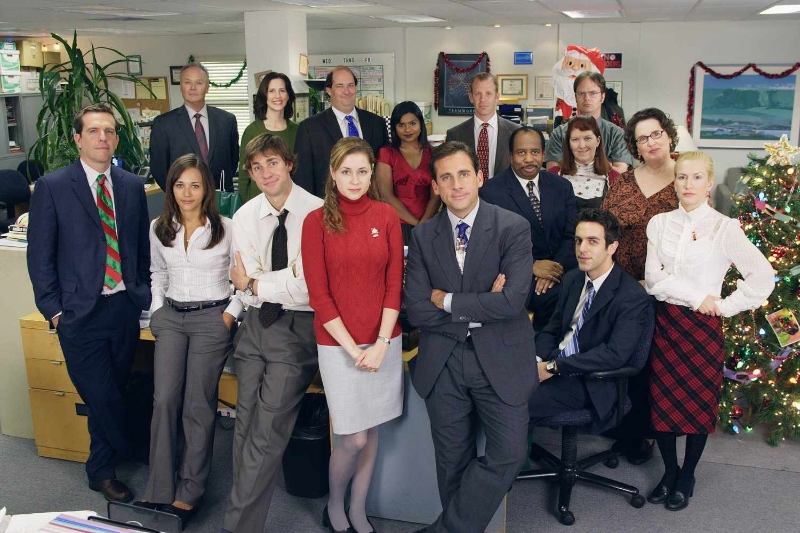
exploring “the office” through the lens of situational leadership leadership lessons from dunder mifflin’s ceo inspired antics
Last updated on November 5th, 2024 at 07:23 am
Fans of “The Office” have always found great entertainment value in Michael Scott‘s unconventional management style at Dunder Mifflin, but may his missteps have any practical lessons? A Situational Leadership® conference lately revealed unexpected links between management theory and the comic anarchy of Michael Scott’s Scranton branch. Ed, the speaker, unintentionally reflected several events from The Office, which led to an insight about Michael’s mistakes and the dynamics of his team could be good models of the Situational Leadership® technique.
Creed Bratton: The Puzzle of Quality Assurance and Lost Confidence
Consider the case when the wild-card quality assurance agent, Creed Bratton, utterly fails a crucial quality check, resulting in a client disaster. Assuming Creed is both skilled and dedicated (a “R4” in Situational Leadership® words), Michael sets off a frenzy certain his outburst will inspire Creed to act. Ed noted, though, that Creed is the classic “R1″—unwilling and lacking ability in the same task he is supposed to be supervising. This incident exposes one of Michael’s regular leadership blunders: treating every employee as though they are “ready and able,” a tactic that leaves his staff flailing.
Michael could have engaged Creed at a “R1” level, giving clear direction, confirming his knowledge, and holding him responsible if he had thought through his strengths and shortcomings. Rather, he depends on charm and presumptions, hoping staff members will somehow read his mind. Ed said that managers sometimes fall into this trap, putting abilities onto staff members without checking them, which usually results in lost chances and bad results. The consequences of Creed’s mistakes go beyond mere humor to include a lesson on the need of sufficient assistance and performance evaluation.
Jim Halpert: The Development of a Contented Worker into a Performer
Though his path through Situational Leadership® ideas is both clever and funny, Jim Halpert, the legendary prankster from The Office, may appear like a pleasant diversion. Jim is startled into a rare episode of self-awareness when Ryan formally warns him about his work performance. This nudge helps him to go from a lazy slacker to a remarkable actor who finishes a difficult contract. Ed claims that Jim’s circumstances exactly show how occasionally employees need a push—such as a performance review or warning—to reach their full potential. “Jim needed a kick in the rear,” Ed remarked, pointing out that motivated even the most lazy workers may excel.
Ed said that Jim’s reaction to the warning is a case study of motivated behavior. Jim possessed the capacity but lacked the urgency—a trait of a “R3” in Situational Leadership® terms: able but sometimes inconsistent. Managers may motivate their “R3” staff members to develop by offering the correct balance of direction and incentive. In Jim’s instance, the pressure from Ryan and Michael unintentionally helped him rise to the occasion, proving how crucial it is for managers to assess, drive and provide direction where needed.
Keep Reading
Darryl Philbin: The Often Ignored Innovator and the Value of Appreciation
If only they were given weight, the warehouse manager Darryl Philbin offers Dunder Mifflin a fresh viewpoint and creative ideas that might help the business. Michael treats Michael like a youngster happy with a crayon picture when he offers a means of simplifying shipping procedures, discounting him with polite applause. Ed said in Situational Leadership® terms of a textbook failure of supervision; Darryl, a classic “R4” with great capability and commitment, needed little supervision but did need acknowledgment. Michael suppressed his creativity and discouraged more participation by discounting Darryl’s experience and observations.
This conversation not only exposes Michael’s weakness but also emphasizes how executives could undervalue their staff members, therefore neglecting the possibility right in front of them. The CEO of the company, Jo Bennett, finally intervenes and acknowledges Darryl’s talent, demonstrating that occasionally an outside leader is necessary to identify internal capability. Her reinforcement of Darryl’s value contrasts with Michael’s supervision and reminds us that good leaders know how to empower their team members and acknowledge efforts—qualities that can either help or hinder the expansion of a company.
Dwight Schrute: The overzealous rule-following turn-off became responsible leader
Without including Dwight Schrute, the quirky assistant (to the) regional manager of The Office, no study of its leadership teachings would be whole. Although Dwight’s loyalty to Dunder Mifflin is unmatched, his inflexible commitment to regulations often brings him backfire since he sees every chore as a mission for fame. Ed noted that Dwight is the archetypal “R2″—willing and very motivated but frequently requires leadership to prevent going too far. If Dwight is matched with well defined goals, his dedication and drive make him a perfect candidate for development.
Ed pointed out that Michael’s erratic treatment of Dwight—sometimes supporting his unusual conduct, sometimes reining him in—missed a chance to properly harness Dwight’s energy. Leaders who provide continuous direction can enable staff members like Dwight go from fanatical rule-followers to responsible team players. In Dwight’s case, we watch his path change as he develops his ability to control his commitment—a process that emphasizes the need of tailoring leadership styles to the demands of every team member.
Beyond Comedy: Practical Leadership Learning from Dunder Mifflin’s Chaos
Although The Office is a sitcom meant for laughs, the character arcs reveal rather insightful analysis of real-world leadership relationships. From mistaken confidence to a lack of follow-through, Michael Scott’s shortcomings expose the need for strategic supervision and the subtleties of knowing team members’ capacities. Though Michael’s mistakes usually lead to anarchy, they mirror difficulties that many executives encounter on their path to good management. Ed’s seminar observations and Dunder Mifflin’s fictitious events help us to understand that good leadership calls for a mix of inspiration, appreciation, and careful delegation.
The Office offers a mirror to our daily work challenges, catching the complexity of motivating, overseeing, and developing team members, so helping those want to hone their leadership skills. With all his eccentricities and mistakes, Michael Scott unintentionally shows the importance of situational leadership® in an approachable and informative manner. If Ed included The Office into his leadership development, he might just find it to be the ideal mix of insight and fun for future managers trying to refine their abilities. After all, watching a show that brilliantly captures the highs and lows of the business world is the best method one might learn.









